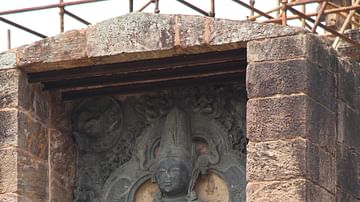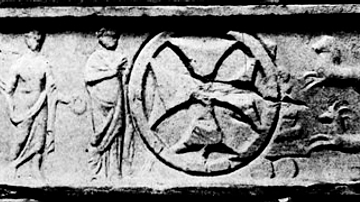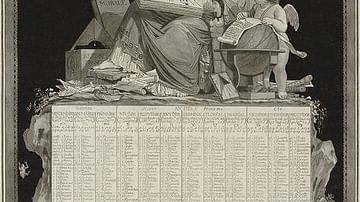Illustration
The Aztec Sun Stone (also known as the Calendar Stone) is a representation of the five eras of the sun from Aztec mythology. Some scholars consider the central face to be that of Tonatiuh, the sun god, while others maintain it is the night sun Yohualtecuhtli or Tlaltecuhtli. The stone was part of the architectural complex of the Temple Mayor of Tenochtitlán and dates to c. 1427 CE. The basalt stone measures 3.58 metres in diameter, is 98 centimetres thick and weighs 25 tons. (National Museum of Anthropology, Mexico City).
Cite This Work
APA Style
Rosa, B. (2017, March 24). Tonatiuh, Calendar Stone. World History Encyclopedia. Retrieved from https://www.worldhistory.org/image/6452/tonatiuh-calendar-stone/
Chicago Style
Rosa, Bomba. "Tonatiuh, Calendar Stone." World History Encyclopedia. Last modified March 24, 2017. https://www.worldhistory.org/image/6452/tonatiuh-calendar-stone/.
MLA Style
Rosa, Bomba. "Tonatiuh, Calendar Stone." World History Encyclopedia. World History Encyclopedia, 24 Mar 2017. Web. 28 Mar 2025.







